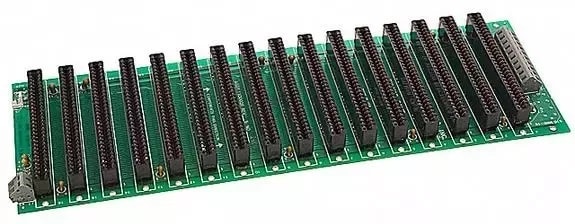If you open your computer, you will see a mainboard installed. This board can be either a motherboard or a backplane. Some might say there really is not any difference between them at all. Is that true? To find out let us define what each of these components do.
Motherboard
The heart of your basic computer. This board has the circuitry to power the devices that can be installed on it. Hard drives, RAM, slots for cards, the CPU. All these devices work in tandem with the motherboard to power and process all the data that a PC can handle. Generally, on the motherboard there are slots for periphery devices. The maximum number of these slots this type of board can offer is 7. This is the type of board you will find in almost all consumer computers
Backplane
But what if you wanted a computer that could hold more peripheries? This is where a backplane would come into play. A backplane is a circuit board that contains slots for possible board expansions and allows these boards to communicate with each other. This number can range from two to up to twenty slots!
Can a backplane be the heart of the computer in the same way a motherboard can? That would depend on the type of backplane we’re talking about. There are two variants of a backplane:
- Passive– In a passive variant, the backplane does not have the circuitry that a motherboard has. In fact, the components typically found on a motherboard will be located on an expansion adapter card plugged into a slot instead. That is called a Single Board Computer (SBC). Now you have the ability of having numerous different configurations of expansion slots on the backplane (ISA, PCI, PCIe) in all different configurations.
- Active – In an active variant, the backplane has all the circuitry needed to control and power the board itself. Sometimes a motherboard can be referred to as an active backplane.
One of the biggest differences between using a backplane/SBC combination in comparison with a motherboard is the down time on a repair with a backplane system. Replacing the SBC might take minutes while replacing a standard motherboard could be hours of downtime. Another reason a backplane system might appeal in industrial usages is the longevity they provide. Typically, motherboards have a life cycle of 12-18 months whereas SBC and backplane manufacturers usually offer a life cycle of 5-7 years. Thus, giving the end user the consistency they may need.
The backplane/SBC combination may cost a little more than your standard ATX motherboard setup. However, depending on your needs, a backplane system just might be the right solution for those who have multiple peripherals going into their system.
While similar at times, motherboards and backplanes have clear differences separating them. Do you have questions about which one is right for your needs? General Technics is here to help!

